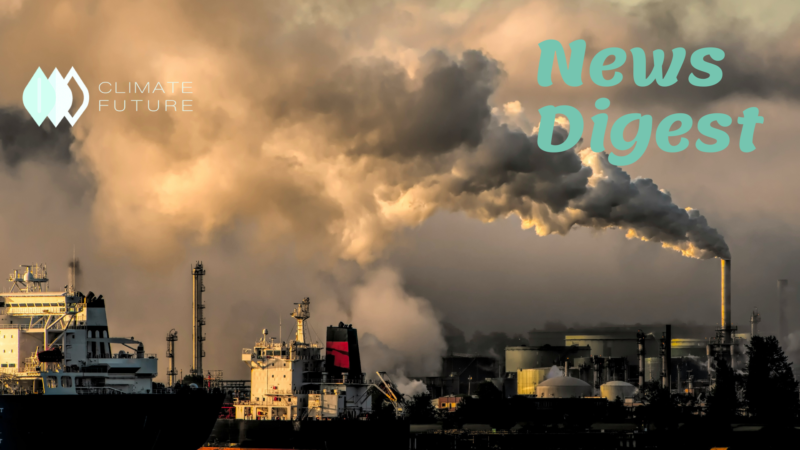This month is the planet’s hottest on record by far – and hottest in around 120,000 years, scientists say
According to a report published by the World Meteorological Organization and the European Union’s Copernicus Climate Change Service, in July the heat has been so extravagant that it will break the record by a significant margin. It was the hottest record for a three-week period in over a hundred thousand years. According to many scientists, including those at Copernicus, these temperatures are the warmest the planet has experienced in 120,000 years, despite the fact that the data used to track these records only go back to 1940. This is because we have centuries’ worth of climate data from tree rings, coral reefs, and deep-sea sediment cores. The human cost of the heat is severe. Heat-related deaths have increased as temperatures in several US regions have gone above 120 degrees Fahrenheit (50 degrees Celsius), and people are getting life-threatening burns from falling into extremely hot ground. More than 40 people have died in the Mediterranean as a result of the region-wide wildfires that have been sparked by the hot weather. Food security is being threatened and lives are being lost throughout Asia as a result of protracted, extreme heat waves. El Nino, a natural climate fluctuation with a warming effect, has not yet had a significant effect on temperatures because it is still in the growth stage. However, it is projected to raise temperatures even further.
Warming trend in Asia set to cause more disruption: UN Weather agency
The most recent State of the Climate report for the area warns that melting ice and glaciers and increasing sea levels will cause further socioeconomic disruption in the future. The mean temperature over Asia in 2022 was the second- or third-warmest on record and was about 0.72 degrees Celsius (°C) over the average from 1991 to 2020, which was roughly 1.68°C above the WMO 1961–1990 reference period for climate change. According to the agency’s latest research, Asia is also the continent with the highest disaster risk. The majority of the more than 80 natural catastrophes that occurred on the continent in 2022—mostly floods and storms—left upwards of 5,000 people dead and 50 million more people affected. Over $36 billion in total economic harm was caused. Asia also has a general pattern of surface ocean warming that started in 1982. The seas east of Japan, the Philippine Sea, and the northwestern Arabian Sea all experience warming rates that are greater than 0.5°C per decade, or nearly three times the global average. The report was presented at the UN Economic and Social Commission for Asia and the Pacific’s (ESCAP) Committee meeting on Disaster Risk Reduction. It is supplemented by an interactive story map that puts a particular emphasis on agriculture and food security. According to WMO, agriculture, which is at the heart of all climate adaptation plans, will be impacted by the anticipated rise in the frequency and intensity of extreme events over much of Asia.
Heatwave threat impacts half of all children in Europe and Central Asia
According to the report from UNICEF, children are particularly vulnerable to the effects of heatwaves because their core temperatures increase much more quickly and much higher than those of adults, placing them at risk for life-threatening conditions including heatstroke. The inability of youngsters to focus and learn during heat waves also has an impact on their academic performance. Even though UNICEF highlighted that adults generally experience heat differently, children are particularly susceptible to the effects of heat waves. As a result, it can be challenging for parents and other careers to recognize potentially dangerous situations or signs of heat-related disease in children. Heatwaves have increased in regularity over the past few years throughout Europe and Central Asia, and they don’t appear to be going away any time soon. According to the analysis, boys and girls in the area face a troubling future if the most cautious projections of a rise in global temperature of 1.7 degrees Celsius are accurate. High heatwave frequency is expected to affect every child by 2050. Intense heatwaves will last for an average of 81 percent of the time for children, and for 28 percent of those children, the heatwaves will be significantly worse. UNICEF offers six recommendations for governments in Europe and Central Asia to safeguard children. They include heatwave mitigation and adaptation into climate-related commitments as well as disaster risk reduction and disaster risk management strategies, keeping kids at the center of all initiatives. In order to enhance prevention, early intervention, diagnosis, and treatment of heat-related illness in children, governments should also make investments in basic healthcare, including teacher and community health worker training. They can also contribute to local environmental evaluations, national climate early warning systems, and measures to enhance resilience.
Southeast Asia looks to its growing piles of trash as new energy source
The utilization of waste as an energy source is developing as Southeast Asia’s expanding population produces more and more garbage, with Japanese businesses and their incineration know-how leading the way. In 2022, Mitsubishi Heavy Industries declared that it has acquired all of TuasOne’s shares, the company in charge of running the mass-burn waste-to-energy facility. Southeast Asia has experienced a sharp rise in interest as a result of waste-to-energy plants’ ability to produce power utilizing the heat from incineration. The strength of Japanese businesses resides in their track record, despite the fact that foreign companies are also primarily concerned with acquiring orders. According to the Environment Ministry, Japan has the most landfills in the world with a capacity of about 1,000. In the neighborhood, 40% are powered by machinery. Technology created by Mitsubishi Heavy makes it possible to effectively separate plastic and other waste from biodegradable waste. In order to commercialize it, the corporation plans to do so in fiscal 2023, first in Japan before expanding to Southeast Asia and other regions. Furthermore, Mitsubishi Heavy wants to incorporate carbon capture and storage technology with the waste-to-energy units. For the manufacturing of chemicals, CO2 can be collected. Approximately 70% of all CO2 captured globally comes from Mitsubishi Heavy Machinery. The business is prepared to grow in Southeast Asia’s garbage-processing market because it has experience supplying carbon capture equipment to Malaysia and Vietnam.
References
https://edition.cnn.com/2023/07/27/world/july-hottest-month-record-climate/index.html
https://news.un.org/en/story/2023/07/1139152



